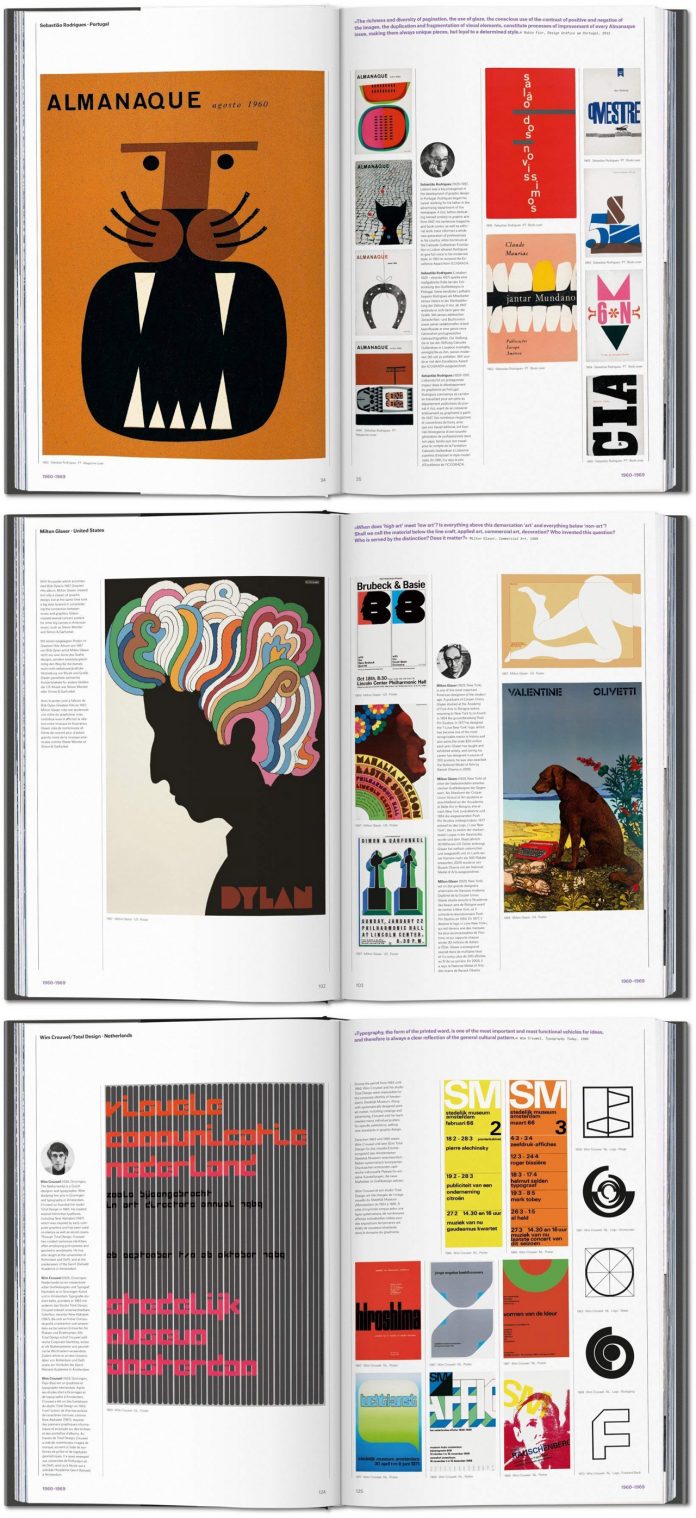Table Of Content

He was best known for his distinctive posters, advertising products, theatre shows, and more. Graphic designers of the time, like Jules Chéret and Alphonse Mucha, produced vibrant poster art that popularised the Art Nouveau style. Their works demonstrated how images and text could be creatively combined through colour, composition, and typography to make compelling adverts and packaging. The innate human drive to express, document, and connect through images has continuously adapted to suit society's changing needs, propelling the ever-evolving visual vocabulary we call graphic design. Designs created in the digital age are not limited to printing media like book covers, posters, or magazine layouts; they have become an integral part of website design, mobile apps, social media ads, and more.
PANTONE COLOR OF THE YEAR
Some surviving copies of Gutenberg’s landmark 42-line Bible have headers, initials, and sentence markers applied by hand in red and blue inks. Although San Francisco remained the hub of psychedelic art into the early 1970s, the style also developed internationally. Pink Floyd worked extensively with London-based designers, Hipgnosis to create graphics to support the concepts in their albums like this cover of Soundtrack from the Film 'More'. From the 1950s onward, the world began its slow approach to the digital era we’re currently enjoying.
History meets artistry - Ohio University
History meets artistry.
Posted: Tue, 05 Mar 2024 01:58:19 GMT [source]
The Rise of Visual Identity: Logos, Branding, and Corporate Design
Over subsequent centuries, ongoing technological and social changes continually shaped the evolution of graphic design. The Industrial Revolution sparked the need for branding, packaging, and advertising on a national scale. In the 20th century, we witnessed the rise of modern art movements from De Stijl to Bauhaus to Swiss International influencing new generations of graphic designers. The digital age has increasingly integrated visual communications into contemporary life through user interfaces, websites, mobile apps, and multimedia platforms.
Logo and identity design
However, this technology did not replace the hand-cut woodblock in Asia, in part because the hundreds of characters used in calligraphic languages made setting and filing the movable characters difficult. Naturally, graphic design became widely used in advertising and other industries, marking beautiful designs on everything from posters to t-shirts, record covers, and more. As computer technology was invented and released throughout the late 1900s, designers began using digital tools — such as Photoshop, which was first released in 1990 — to create their images. Graphic design as we know it began to take shape in the late 1800s, and the term was coined in 1922. As the British Industrial Revolution brought even cheaper and more efficient means of printing, posters and the Art Nouveau style became very popular with early designers.
This process, which was accomplished by applying ink to a raised carved surface, allowed multiple copies of texts and images to be made quickly and economically. This paper provided an economical surface for writing or printing; other substrates, such as parchment and papyrus, were less plentiful and more costly to prepare than paper. Typography is discussed in this essay as an element of the overall design of a visual communication; for a complete history, see typography. Similarly, the evolution of the printing process is discussed in this essay as it relates to developments in graphic design; for a complete history, see printing. After the Second World War, with the emergence new color printing technology and particularly appearance of computers the art of posters underwent a new revolutionary phase. People can create color poster on their laptop computers and create color prints at a very low cost.
Bookings
Many free and open-source programs are also used by both professionals and casual graphic designers. Inkscape uses Scalable Vector Graphics (SVG) as its primary file format and allows importing and exporting other formats. Other open-source programs used include GIMP for photo-editing and image manipulation, Krita for digital painting, and Scribus for page layout. Page layout deals with the arrangement of elements (content) on a page, such as image placement, text layout and style. Page design has always been a consideration in printed material and more recently extended to displays such as web pages. Graphic design can have many applications, from road signs to technical schematics and reference manuals.
13 African American Graphic Designers You Should Know - PRINT Magazine
13 African American Graphic Designers You Should Know.
Posted: Sat, 10 Feb 2024 08:00:00 GMT [source]
What is Graphic Design? (& Types, History & Examples)

The process was developed in Germany in the 1430s from the engraving used by goldsmiths to decorate metalwork. Engravers use a hardened steel tool called a burin to cut the design into the surface, most traditionally a copper plate.[60] Gravers come in a variety of shapes and sizes that yield different line types. Motion graphic or animation design is another type of design that you often see in videos and GIFs. Both fonts in this font pair below were also designed by someone who specializes in creating typefaces. Here are a few statistics that help further our point of just how essential the graphic arts are. Putting together all of the different elements and principles can turn a design into a professional-looking graphic.
Create Stunning Content!
However, only in 1450 was the system for printing books and other forms of literature in place. In 1460, the first illustrations in a printed book design followed (and you know how a picture is worth a thousand words!). When the Nazis rose to power in Europe during the 1930s, Modernist experiments were denounced, and many artists, architects, and designers immigrated to the United States. This migration, along with their professional and teaching activities, would play a major role in shaping postwar American art and design. During World War II, posters were used once again as a major form of political propaganda, although they then functioned alongside radio broadcasts and propaganda films in governmental war efforts. At Inkbot Design, we understand the importance of brand identity in today's competitive marketplace.
Consider checking out one of our courses to learn the art and business of web design. You’ll build high-value skills not only in design but learn the business side if you want to thrive as a freelancer. The introduction of digital tools provided a new, revolutionary way of creating graphic design. It used a simple, user-friendly interface that said “Hello”, inviting consumers to be a creator themselves.
With the advent of the printing press in Europe, humanity was able to recreate text, art and design on a massive scale, and for relatively cheap. The ancestors of modern companies—also on the rise—soon took notice of how such visuals could affect shopping behaviors and increase profits, thus modern graphic design was born. In the 1968 article “The Black Experience in Graphic Design,” Dorothy Jackson writes, “The fact is, of course, that there are still just relatively few black designers in the field. Yet the very existence of even these few designers would indicate that it is possible for young black people to receive adequate training in the design profession….
He also promoted the integration of words and images into one unified composition and the use of functional typography. Fundamental artistic movements like the Swiss Style of the 1950s and punk rock-inspired grunge typography of the 1990s revealed graphic design's power to challenge creative norms and capture the prevailing zeitgeist. Masters like Paul Rand and Saul Bass elevated graphic design into the popular consciousness through iconic logos and movie title sequences that imprinted their striking visuals into public memory. From Gutenberg to Glaser, graphic designers have harnessed revolutionary tools and championed new design perspectives to transform visual communications and bring form to society's ever-evolving ideas and values.
As you read this article, interpreting all these tiny, abstract marks of the Latin Alphabet into words and sentences, it’s easy to forget that alphabets are a man-made invention. As far as we know, the Sumerians created one of the first written languages, most likely as a means of recording trader inventories to ensure couriers didn’t steal anything on deliveries. Both individuals and organizations that work with arXivLabs have embraced and accepted our values of openness, community, excellence, and user data privacy. ArXiv is committed to these values and only works with partners that adhere to them. Receive weekly practical tips on how to communicate visually, right in your inbox. However, if you want to start small, you can use Visme’s video maker to create a motion video by customizing the template below.
The visuals would be filled in later by commercial artists who typically just illustrated whatever the copy was describing. Six months after the end of World War I, the school encouraged artists and designers to use their talents to help rebuild the broken society. The Bauhaus grammar — a triangle, a square, and a circle — evoked this back-to-the-basics mentality. The Italian scholar and printer Aldus Manutius the Elder founded his Aldine Press in 1495 to produce printed editions of many Greek and Latin classics. His innovations included inexpensive, pocket-sized editions of books with cloth covers.
Students learned through hands-on workshops and the creation of models and prototypes. There was an emphasis on new technologies and materials like glass, steel, and concrete, which enabled a sparse yet visually striking Bauhaus design aesthetic. Over many millennia as human cultures advanced, so too did the sophistication of their visual languages. Ancient civilisations developed more complex writing systems combining pictograms, ideograms, and phonetic symbols, allowing them to share knowledge across generations through texts and inscriptions. The ancient Egyptians, for instance, pioneered a hieroglyphic system fusing figurative, conceptual, and sound-based elements that enabled them to spread cultural narratives and political decrees. In conclusion, the history of graphic design is filled with innovation, creativity, and cultural evolution.
The process involved carefully preparing parchment or vellum, mixing inks, and then hand-lettering each page. The materials were expensive, and the labour involved made books a luxury item, accessible only to the wealthy or the clergy. Long before the term "graphic design" was coined, humans were already practicing it.

No comments:
Post a Comment